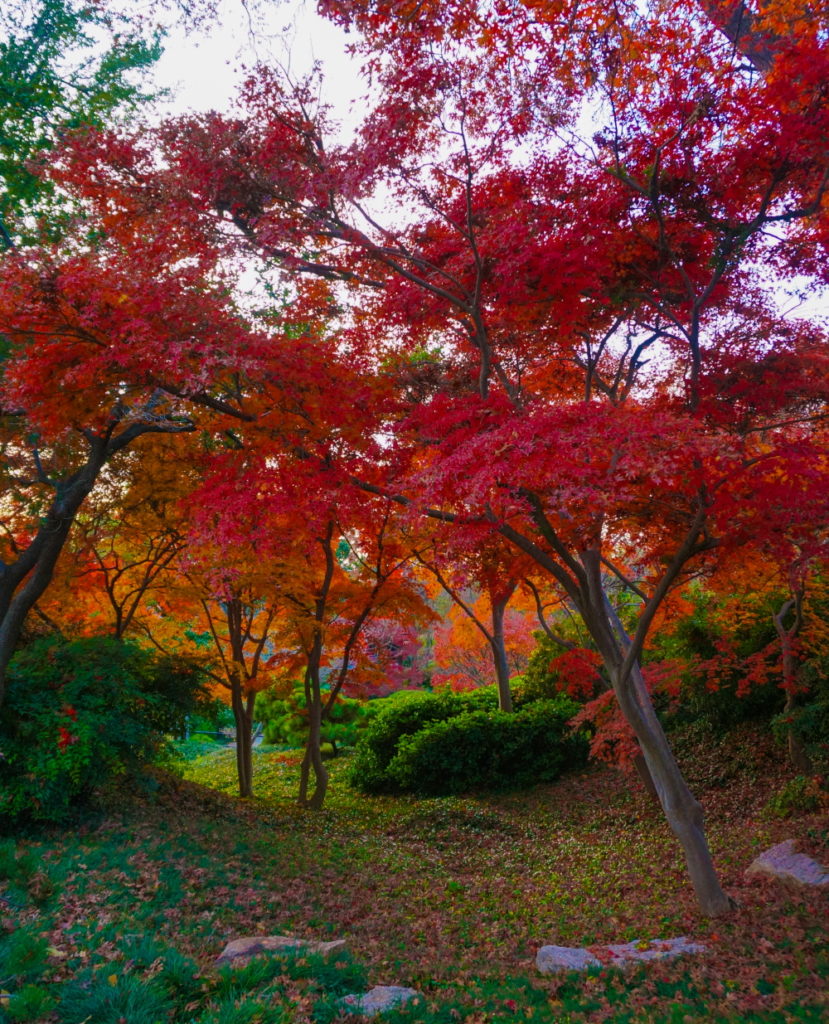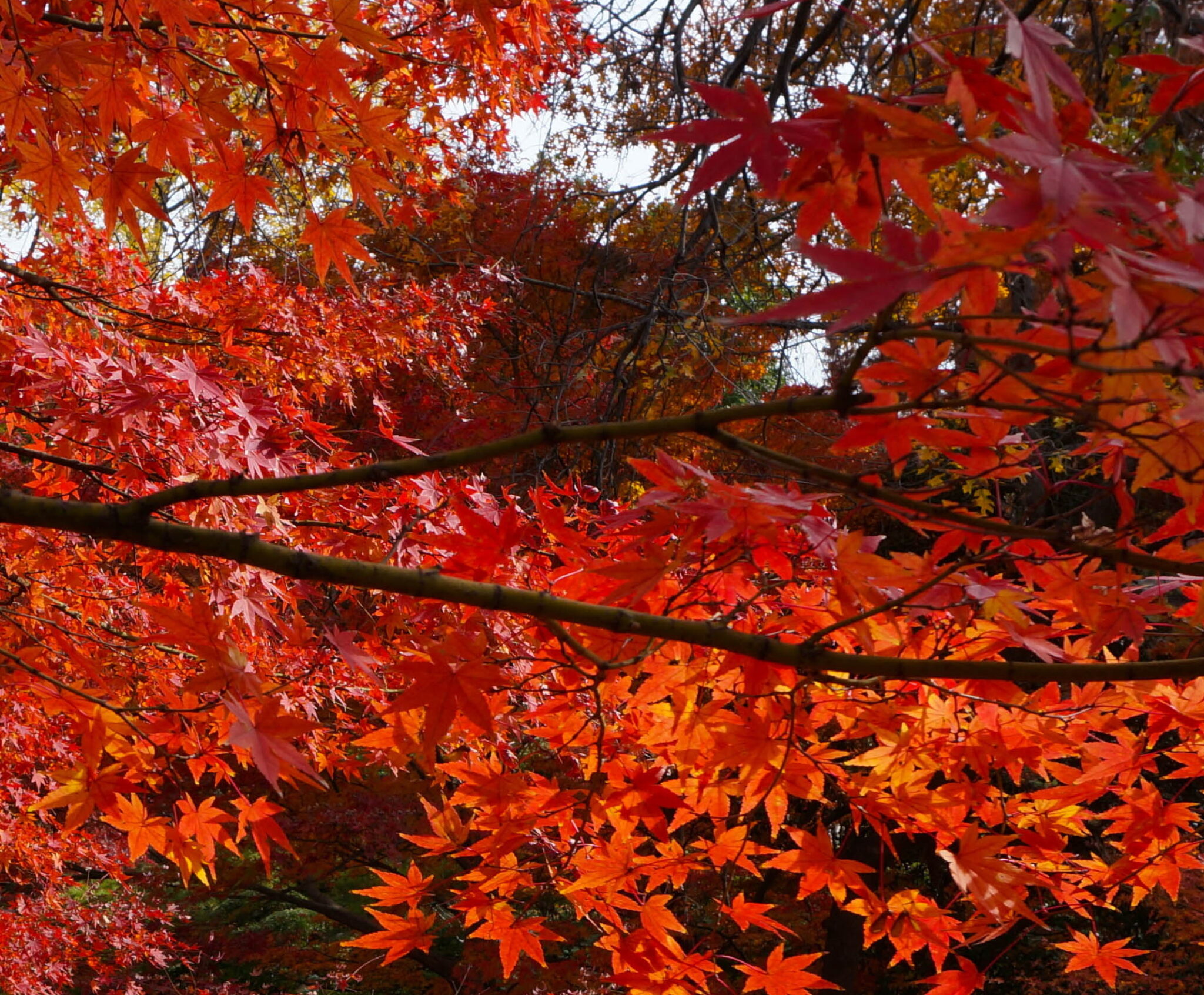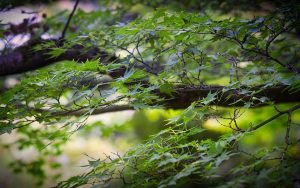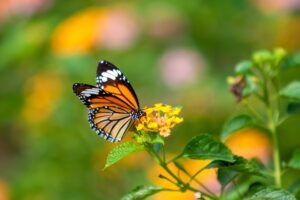
Contemporary life is full of millions of stimuli fighting for your attention. We are bombarded with alerts, notifications, pop-ups and announcements—it seems every little thing demands an instant response.
Contrast this type of frantic living with the peaceful experience of being within nature. Trees and flowers demand nothing of you. You are free to notice what you want, or simply to be. Your heart rate slows and your breath deepens.
This experience has been given a name in Japan. It is called “shinrin-yoku,” which translates to “forest bathing,” using “bathing” to mean immersing yourself within something. (No one is asking you to remove your clothing—in fact, we ask you keep it on while visiting the Garden!) Another frequent translation is “taking in the forest atmosphere.” The term was introduced in Japan in the 1980s to encourage people to disconnect from technology and spend time outdoors.
“Taking a break in nature has real benefits,” says Director of Community Education Erin Starr White. “One study I saw said that spending as little as five minutes in a natural setting improves your mood, self-esteem and motivation.”
| Slow Garden Experience Nov. 13, 9 – 10 a.m. Shinrin-Yoku: Forest-inspired Watercolor Landscapes Dec. 1, 6 – 9 p.m. |
Practicing shinrin-yoku can be as easy as walking through a favorite corner of the Garden with your phone tucked away and notifications off. Use your senses. Notice the feel of the ground beneath your feet, the scent of leaves, the colors of flowers.
For a guided exploration, try the Slow Garden Experience. These are hour-long monthly garden walks in which guests are invited to leave distractions behind and contemplate the sights, smells and sensations encountered along the way.

Art is another good way to engage with nature. “Take along a sketchbook or even just a pad of paper and some pencils. Try to reproduce the shapes you see,” says White. “It doesn’t matter if you think you can’t draw—no one ever needs to see your work. The goal is to observe the world in a new way.”
Experienced artists have an opportunity to explore nature in an upcoming class, “Shinrin-Yoku: Forest-Inspired Watercolor Landscapes.” Artist Brenda Ciardiello will lead students in a virtual class through the process of composing and painting a large watercolor landscape inspired by forests and the plants within them.
However you choose to engage with nature, the Garden is here to help you unplug and unwind. You are always welcome to bathe (while adequately clothed, of course) in our forest.







